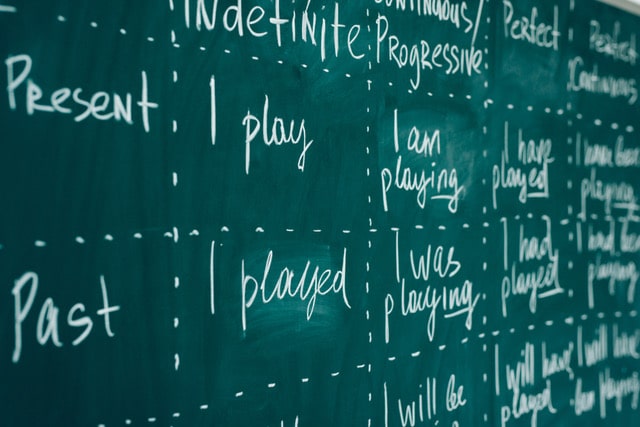Do Grammar Rules Matter When Learning a Second Language?
“Siri, how is your day going?”
“Great, Jessica. It’s always a joy conversing with you.”
We constantly find ourselves having conversations with Siri after asking her how long to preheat the oven for the vegan brownie recipe she gave us earlier. Siri and other types of virtual assistants almost feel too human at times. It is so easy to get lost in the moment of conversation or attempt to push the limits of their scope, like the age-old question of “Siri, what is 0/0?” (if you haven’t asked before – enjoy). When did language replication get so advanced? So real? And how? In the NPR podcast of The Pulse, How Technology is Changing the Way We Talk, host – Maiken Scott takes his audience on a journey of language replication and how the constantly emerging changes in this technology highlight a little known fact – grammar doesn’t make the language. Memorizing grammar rules, it turns out, isn’t a great way to become fluent in a second language.
Technology Imitates Language
Language imitation has had huge strides in the last few decades – few years, even. We can all remember the choppiness of the first Siri versus how perfectly she delivers directions now. For decades, researchers and phonologists have attempted to replicate the perfect tone, speed, and flow of language – starting with early speaking boxes using a reed and bellows to mimic the lungs and voice box and continuing on to machines like the Voder which played like a piano and broke down the acoustics of language. Yet, with all these inventions, the process of learning grammar that has risen to fame in the language world is missing and for good reason. Of course, this could be because the importance of grammar hadn’t been realized yet, but it could also be the reality that grammar isn’t as important after all.
Do Grammar Rules Help Our Fluency?
I know what your childhood teachers said. I, too, remember learning Phonics and punctuation and tenses and all the ins-and-outs of language structure. We all had them embedded in our being in order to understand language, but how much does it truly help? Weren’t we already fluent by the time we got to grammar school?
It is more likely for you to interact with a language long before you learn any of its grammar through mediums like technology. The fact is we are affected by technology in more ways than one, with language and speech being foremost. It is an expectation or myth that humans are to affect technology and not be affected by technology. Impossible. Our everyday interactions are marked by technology and with the invention and popularity of the internet, so many of our human connections – where we draw our language from – are from behind a screen. Apps like DuoLingo and Babbel bring language learning to your fingertips and keysmashing allows you to interact with language in a new way – blowing off steam by simply smashing the keys on a keyboard.
One thing has been extremely clear – grammar does not give better results in language acquisition. Language-learning apps may give you masses of vocabulary and conjugations, but they hardly prepare you for real-world conversations and interactions.
The Truth About Learning Grammar Rules for Second Language Acquisition
They fail to prepare you for deep meme-comprehension and pop-culture references. You become so bogged down with the technicalities that you fail to get the most important parts of language learning – actually learning the language. Oftentimes, the pieces of vocabulary and grammar can hardly string together an actual sentence and leave you feeling frustrated with the DuoLingo bird that keeps sending you mildly threatening reminders to practice. Even if meme comprehension isn’t at the top of your list for language fluency, grammar should not be.
In an experiment, Cara Short exposes one group to grammar rules before they begin learning a language and with the other group she does not. One would expect the priming of grammar rules to aid in language acquisition, but it actually works against you. Those who were not exposed to grammatical rules before beginning the language learning process actually had a more native-like understanding and control of the language, unlike those with the grammar rules, who ultimately struggled.
Learning the Life of Language (Big Picture!)
These changes are much more than our basic interactions; they’re in the deepest parts of our language production, understanding, and communication. Think of the creation and addition of new words like LOL and OMG or faxing and TV – all of which would not exist without technology. Words that many of us could not imagine would be part of the English language, even though the most recently LOL was added to the dictionary. Memes have been written off as a Gen-Z fad, but in reality, are just internet versions of pop culture references and in-jokes. Our fathers may not understand why Kermit the Frog is sipping tea, but are quick to chuckle when they make you an offer you can’t refuse. These are the ways that we interact and gain language, not buried neck-deep in the latest edition of Sur la Vie or ¡Avancemos!. Both of which do a fantastic job at the nitty-gritty of language, but not the life of language.
The proof is in the pudding – or the podcast. Grammar, a helpful and necessary part of language, is hardly the marker of one’s understanding of language. Rather it is the interactions, the understanding of the nuances, the tones, the cues, the gestures and all the things that make language come alive. Language has hardly ever been a static fact of life, rather it flows like a river and changes with the sun. Put the grammar textbook away and interact with the language in a way that makes it automatic and second-nature. Watch a Netflix show, listen to a raunchy podcast, find some uber-cool YouTubers, and after that, check us out here at TruFluency. Take a trial class and find a language tutor that works for you – we’ll leave the grammar textbook at home.





